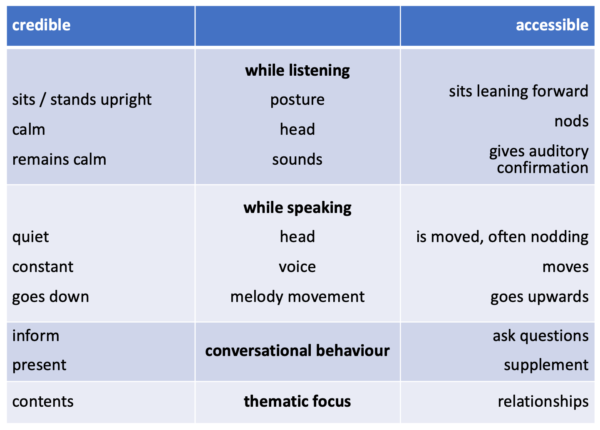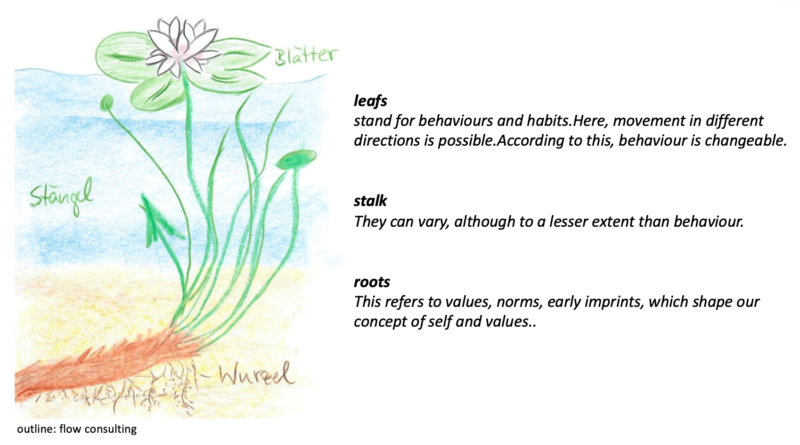Part 1 of 2 / June 2021
In this first part of her blog, Gabriele Möllenkamp describes what women in management positions should pay special attention to on their way to upper management.
According to a recent statistic of the Federal Statistical Office in Germany “only every third manager is a woman”. Nevertheless, there are women in management positions and the question arises as to what they have done differently from other female leaders.
The so-called “glass ceiling“
Perhaps you are familiar with the term ‘glass ceiling‘? This image describes the experience of many women in middle management: advancement to first and second management functions succeeds well, but then the path falters: advancement to management or the board of directors still does not want to succeed.
A look back: June 2013 – an event on the topic of ‘The Glass Ceiling’ – hosted by the head of a university of applied sciences. Marion Knaths was invited as a key note speaker; among other things, author of the book ‘Games with Power’. The host opened the event by saying that she had never come into contact with the glass ceiling in the course of her career. She had never had the experience of being denied something just because she was a woman. And she went on to explain that – without having been aware of it – she had consistently used behavioural patterns throughout her education and professional career that are described and recommended in the book as ‘assertive’.
Women and Leadership: The importance of behaviour and impact
Here it becomes clear: women and leadership is always a question of behaviour and effect. It is not only professional qualifications that count; it is much more important to attract attention and to convince through appearance and performance. The following overview describes which forms of behaviour are best suited for this:
Appearing approachable comes easily to many women. However, it tends to be associated with hierarchically lower positions. Credible’ behaviour tends to be associated with hierarchically higher positions and it tends to be more associated with the male gender. (cf. M. Grinder ibid.)
Therefore, it is important to practise credible behaviour with women for a convincing appearance as a leader.
Women in management positions: 5 tips for a convincing appearance
1. Sit and stand upright.
2. Keep your head still.
3. Lower your voice at the end of the sentence.
4. Inform more than ask in the conversation.
5. Do not put your thematic focus on relationships but on content.
The Waterlily Model
The effect of body language – facial expressions, gestures, behaviour in space – also plays an important role in current training and coaching for women. Sustainable, i.e. long-term lasting change, however, requires a focus on other aspects in addition to the concrete visible behaviour. Behaviour is rooted in individual attitudes and based on fundamental beliefs. The waterlily model illustrates this connection.
Outlook for Part 2
In the next blog on women and leadership, you will read more about the self-image and understanding of roles as well as the attitude towards micro-political strategies. In order to bring more women into management positions, pure behavioural training often falls short. Read here what constitutes an attitude of ‘shaping leadership’.
The waterlily model, see Gellert, M., Nowak, C. (2004): Teamarbeit-Teamentwicklung-Teamberatung. / Schein, Edgar H. (2018): Organizational Culture and Leadership.
picture: ©Suteren Studio | stock.adobe.com
Part 2 of 2 / November 2021
In this second part of Gabriele Möllenkamp’s blog, you can read about the self-image and understanding of roles, and the attitude to micro-political strategies that help women in management positions on their way to upper management.
In the first part of my blog, I outlined the distinction between credible and accessible behaviour: Credible behaviour tends to be associated with higher hierarchical status, while accessible behaviour tends to be associated with lower hierarchical status. Furthermore, credible behaviour tends to be attributed to the male gender, while accessible behaviour tends to be attributed to the female gender. From this I had derived concrete recommendations for more convincing behaviour.
Convincing strategies for women in management positions
Last week I again had the opportunity to present this differentiation in a seminar and to discuss it together with my (female) participants.
A fundamental question was: If I agree with this description or differentiation and take it seriously, does that mean that I should change my behaviour as a female leader in the direction of ‘credibility’? And – to put it more pointedly – the question: Is that (actually) your recommendation? My answer: “It depends.” In saying this, I am not evading an answer, rather I am describing a principle of rhetoric: ‘Choose the strategies that support the achievement of your goal’.
This means quite pragmatically: When it comes to presenting oneself as credible and competent, it makes sense to use behavioural patterns that serve the area of credibility. If, however, the aim is to make connection clear and to communicate at eye level, it makes sense to use behavioural patterns that belong to the area of accessibility.
This recommendation to act strategically is repeatedly met with sometimes fierce opposition in training and coaching sessions for female leaders – and this seminar is no exception. This is expressed in formulations such as: “I don’t want to bend” or: “I want to remain authentic.”
Horizontal and vertical language system
In my experience, female leaders tend to reject strategic approaches in dealing with each other, while male leaders see corresponding recommendations as a helpful, useful tool to add to their own toolbox.
An explanatory approach for these different reactions is offered by the management consultant Peter Modler. Modler very clearly outlines the communication world of women in contrast to and in distinction from the communication world of men. He explicitly refers to studies by the sociolinguist Deborah Tannen from the 1980s: While men moved predominantly in the vertical communication system and all their actions and patterns of interpretation took place within this system, women acted more in the horizontal communication system.
Typical female communication is oriented towards content and relationship; typical male communication is oriented towards status and territory. Strategic recommendations are accordingly understood by male managers as support to consolidate their status. Female managers tend to understand them as an attack on their self-image and understanding of their role.
An understanding of roles based on gender stereotypes makes it difficult for female managers to act in a power-political way in status- and power-oriented contexts.
Research by Mucha and Rastetter on the willingness of female emerging leaders to use and build power clearly shows:
- There is a positive correlation between upward success and the willingness to engage in micropolitical action.
And:
- There is a negative correlation between success in promotion and a self-image based on gender stereotypes.
Power – they explain – is less important for women than for men. While male leaders understood their leadership task primarily as a ‘role’ that they could fulfil in any context, female leaders understood leadership primarily in terms of content, as responsibility for the task associated with it.
Recommendation for women in management positions
What recommendation for a successful path to senior management can be derived from this?
- Examine your self-image and understanding of your role with a view to possible gender-stereotypical basic assumptions and
- use “opportunities to create new scope and improve one’s own position through one’s own actions” (Mucha/Rastetter 2011: 175).
That means: ‘Play along and watch what happens’. I wish you much success in this. If you have any questions, please feel free to contact me.
Bibliography:
Mucha, A./Rastetter, D.: Macht und Gender: Nach Macht greifen – mit mikropolitischer Kompetenz! In: Gruppendynamik und Organisationsentwicklung; gruppendynamische Organisationsberatung (2012); 173-188; Online publiziert: 20.03.2012; VS Verlag für Sozialwissenschaften 2012)
Contributed image: ©Suteren Studio | stock.adobe.com





